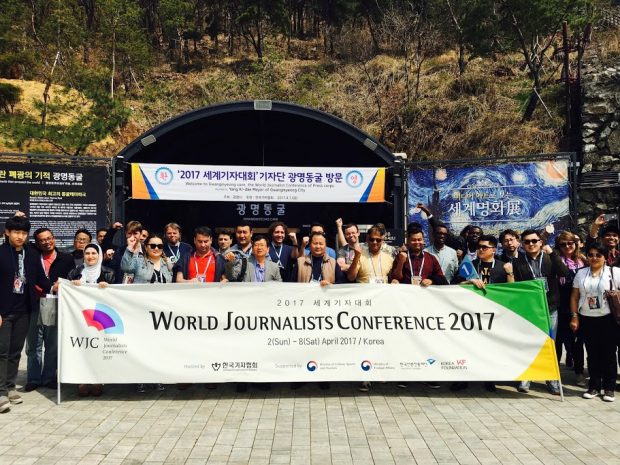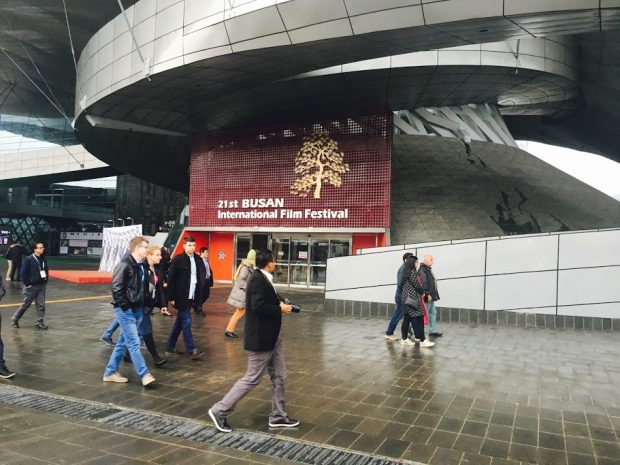World Journalists Conference 2017: A perfect picture of South Korea
After lunch with the Mayor of Suwon during which some promotional videos of the city were screened. Later, all the journalists moved from the hotel to Haewoojae Museum (Mr. Toilet House). Sim Jaedeok, Mr. Toilet, built this house in the shape of a toilet in order to celebrate the establishment of the World Toilet Association (WTA), an international organization dedicated to protecting lives through the improvement via toilet sanitation. After he passed away in 2009, his family donated the house to Suwon City. It became a place to commemorate him, making it the Haewoojae cultural exhibit.
Due to bad weather conditions, we only stopped by to see the historical walls of the city and then we went to the Museum of Art where a guide explained briefly about some rooms of the museum.
Dinner was hosted by the Gyeonggi Province organization: after a speech by relevant members and then came the commemorative group photo, we moved to Value Hotel.
SECOND DAY: BUSAN
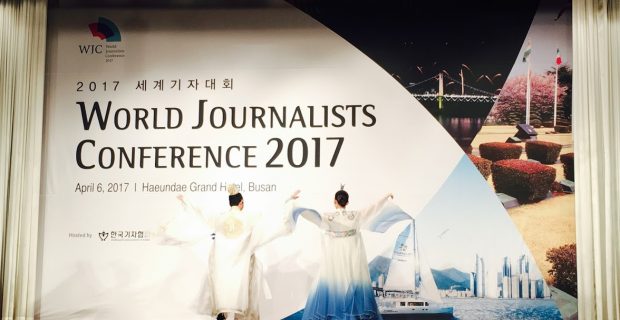 The alarm clock went off at 6 am and the room phone rang to make sure all the journalists were on-time for the departure of the bus. After more than two hours on the KTX (Korea express train), we arrived in Busan.
The alarm clock went off at 6 am and the room phone rang to make sure all the journalists were on-time for the departure of the bus. After more than two hours on the KTX (Korea express train), we arrived in Busan.
Lunch was hosted by Yong-Sam Shin, Senior Vice President of the Busan Tourist Organization. After some promotional videos of the city, some speeches, and the usual group photo, a large buffet was prepared for the diners. The afternoon activities included a visit to the UN Memorial Cemetery, a yacht tour, and a very short conference at the Busan Cinema Center.
After checking-in to Haeundae Grand Hotel, some traditional performances of Korean dancers and musicians took place in the same building. Then it was time for the Busan Mayor’s speech, promotional videos, another round of group photos and a fancy Western dinner.
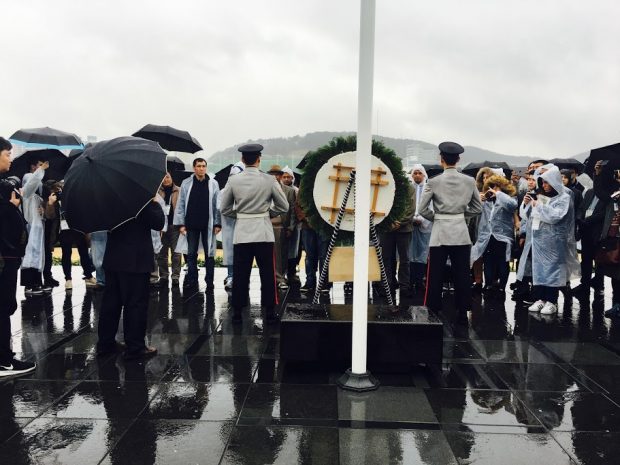 THIRD DAY: GWANGMEYONG AND INCHEON
THIRD DAY: GWANGMEYONG AND INCHEON
Like the previous day, the room phone rang at 6 am and the bus departed from the hotel at 7:30 am. It was time for a sightseeing tour of the modern and new part of Busan while going to the train station to take the KTX train. Lunch was hosted by the Mayor of Gwangmyeong city at the Convention Wedding Hall of the train station. After the usual promotional video, speeches, and group photos, the journalists moved to visit the Gwangmyeong cave. Then it was time to visit Songdo Smart City and Central Park, to have a look at the Incheon port and to walk inside Incheon Chinatown. While the majority of the journalists was taking a rest, almost all AJA participants had a short press conference with Kim Myong Sung, originally from North Korea and are currently living and working in Seoul. At the grand ballroom of Harbor Park Hotel, the Mayor of Incheon and other relevant people in the media field had some speeches. After some promotional videos and the final group photo, a Western meal was served. Some journalists left the same night in order to go back to their countries while many left the day after.
“Please write nice things about our country and our cities when you return home”. This was a common sentence that each relevant speaker said during the World Journalists Conference 2017. Some of the participants complained about a number of gifts they received every day, also pointing out that “I will never accept presents in my home country while I am working”. Someone else noticed that there were no opportunities to ask enough questions in order to have a real overview of Korean society since much of the interview time was used to translate from Korean to English and vice versa or to watch promotional videos about the country.
In fact, the schedule was so packed with tours and visits that the journalists did not even have time to visit places by their own or to speak with local people. For some of them, it was the first time to visit South Korea and they did not know what to expect from this experience. In some cases, for instance, at the Busan Cinema Center, the journalists wasted a great opportunity to ask about deep questions about the system of the Film Festival since they were totally unaware about the topic. Thus, they focused on very basic knowledge, losing the chance to discuss the main issues. Because of the Western food that was provided and the new parts of the cities that were shown, it seemed the forum was not about South Korea.
The tours would have been great for the tourist seeking to explore Korea, but not particularly right for journalists wanting to understand Korean people and the culture. In fact, most of the reporters complained saying that they did not collect enough information to write relevant articles.
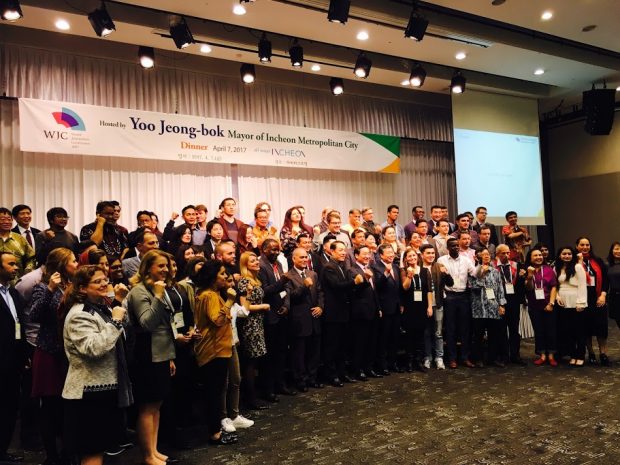 Moreover, having police escort the JAK forum buses and the fact that almost no free time was given to see the sites made some question if JAK was trying to hide something or send a single-sided message to the international world. Everybody, especially Western journalists, expected something different from a democratic country such as South Korea. At the end of the trip, what remained were a big pile of videos and pictures of foreign journalists screaming “Hwaiting” (in Korean, “Fighting”) for a group photo.
Moreover, having police escort the JAK forum buses and the fact that almost no free time was given to see the sites made some question if JAK was trying to hide something or send a single-sided message to the international world. Everybody, especially Western journalists, expected something different from a democratic country such as South Korea. At the end of the trip, what remained were a big pile of videos and pictures of foreign journalists screaming “Hwaiting” (in Korean, “Fighting”) for a group photo.
To be honest, there is something more: as if that was not already random enough, one of the gifts the journalists received was a USB and inside, there were other promotional videos of South Korean places.
This year’s World Journalist Conference was indeed an effort to highlight the positive aspects of Korea, though every nation is bound to have both a good side and a negative part. It would have been good to take each city perhaps one step at a time, to really understand the background of South Korean society. It is common sense that journalists need more than an introduction to writing an article on a group of people, let alone a nation as diverse as South Korea. One can only wonder why Journalist Association of Korea was so eager to promote each city without allowing the participants to question and interact with city officials.
Alessandra Bonanomi – The AsiaN




















